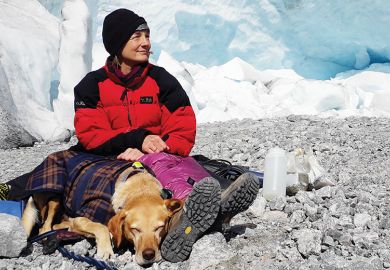More than 50 years have elapsed since the first attempts were made to describe the field then recognised as applied geology. Today "environmental geology" is the fashionable title, and the scope has increased greatly beyond the earlier treatments of basic petrology, stratigraphy and palaeontology combined with selected aspects of economic and engineering geology. In this book, Fred Bell's main mission is to link geology to important practical issues of land-use planning and development. Almost three-quarters of the text is concerned with descriptions of the geophysical environment organised loosely around a human resource-hazard theme. After an introductory chapter largely concerned with mapping, accounts of volcanic, earthquake, mass movement, fluvial and coastal processes are followed by chapters on arid and glacial areas, water resources, soil resources, problem soils and the uses of different types of rock. The latter part of the book deals with topics as varied as the impact of mining on the environment, waste disposal and human health before finally reviewing land evaluation and site-assessment techniques.
The author is well qualified to write such a wide-ranging book. His own work is referenced in no fewer than 11 of the 16 chapters, and the detailed treatment of the science is sound throughout. But, as in some other cognate texts, the selection of the material is not always what might be expected. For example, although there is a chapter on mining, no equivalent treatment of quarrying appears. Indeed, quarrying receives only one index reference despite its significant, and often highly visible impacts on the environment and the need for a more sustainable management of most mineral resources. Similarly, there is barely a nod in the direction of "conservation geology", which includes current aspects of public concern such as the protection and preservation of sites of geological and scenic importance in designated areas, such as national parks or heritage coasts. Above all, the need for better planning and development in the urban environment - which is arguably where environmental geology has most to contribute now and in the future - could have been given a stronger emphasis.
However, such comments reflect the evolving nature of environmental geology and the debate about its growing role in improving the human use of the earth, at least as much as the merits of the volume under review. Within its chosen remit, this is an authoritative and carefully written book that deserves to succeed. It is firmly rooted in scientific principles and its essentially traditional approach means that the coverage of many items is more substantial and technical than may be found in other texts. Clarity is aided by a profusion of diagrams, together with black-and-white photographs, backed up with an excellent 31-page index.
This book can be strongly recommended to meet the demands of upper-level students and the planning professionals at which it is aimed.
Keith Smith is emeritus professor of environmental science, University of Stirling.
Environmental Geology: Principles and Practice
Author - Fred Bell
ISBN - 0 86542 875 1
Publisher - Blackwell
Price - £29.50
Pages - 594
Register to continue
Why register?
- Registration is free and only takes a moment
- Once registered, you can read 3 articles a month
- Sign up for our newsletter
Subscribe
Or subscribe for unlimited access to:
- Unlimited access to news, views, insights & reviews
- Digital editions
- Digital access to THE’s university and college rankings analysis
Already registered or a current subscriber?



